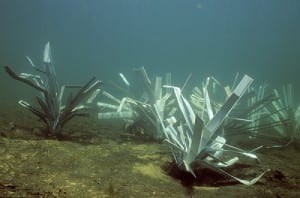Restoration Effort Moving Forward on 11 Projects as Part of
$3.7 Million Nyanza Natural Resource Damages Settlement
BOSTON – State and federal environmental officials announced today that 11 projects benefitting the wildlife, people and landscape of the Sudbury River Watershed will be funded by the $3.7 million settlement reached in 1998 by parties for natural resources harmed by mercury and other contaminants from the Nyanza Chemical Superfund site in Ashland, Mass.
The funds are allocated as part of the final restoration plan and environmental assessment for the Sudbury River Watershed. Dozens of unique habitat models at fishiding.com
“Together, these projects will restore, replace, or acquire harmed natural resources and natural resource services,” said Massachusetts Energy and Environmental Affairs Secretary Rick Sullivan. “Undoing the damage done to this area has been a hard-fought legal battle, but the residents will soon bear witness that the work going forward is more about restoration and less about litigation.”
The projects will restore migratory and cold water fish habitat; protect land to conserve wildlife habitat; create public access to the river in Ashland and Sudbury; create a nature preserve in Framingham and Ashland; and control invasive aquatic weeds to improve recreation and wildlife habitats and diversity.
“In terms of wildlife, public access and recreational amenities, this is welcome news for residents and everyone in the Commonwealth, but it further restores environmental habitat that is essential to wildlife and bringing vitality back to the region,” said Massachusetts Department of Environmental Protection Commissioner Kenneth Kimmell.
The Nyanza Natural Resource Damages Trustee Council – comprised of the Massachusetts Executive Office of Energy and Environmental Affairs, represented by the Massachusetts Department of Environmental Protection (MassDEP), the U.S. Fish and Wildlife Service (Service), and the National Oceanic and Atmospheric Administration (NOAA) – worked with citizen, community and environmental groups, local and regional officials, and state and federal agencies to identify restoration project ideas. The final plan also incorporates public comments on an earlier draft.
“The Nyanza natural resource settlement will support projects with wide-ranging benefits to wildlife, including healthier wetlands for waterfowl, enhanced streams for brook trout, and restored habitat for songbirds not only in the Sudbury River watershed, but also in their Belize wintering grounds,” said Service Regional Director Wendi Weber. “In addition, several projects will improve access to the river for exploring the Service’s popular Great Meadows National Wildlife Refuge.”
“NOAA is delighted that these projects will have a positive impact on the important wetland and river habitat in the Sudbury River Watershed,” said NOAA Fisheries Northeast Regional Administrator John Bullard. “Restoring access to upstream habitat will help to improve fish populations, including river herring, American eel, and American shad.”
Restoration projects will:
- Improve wetlands and river habitat through the control of aquatic weeds in the main-stem of the Sudbury River;
- Restore coldwater fish habitat through riparian channel and stream-bank improvements;
- Assess migratory fish passage in the Concord River that will provide access to habitat in the Concord, Assabet and Sudbury rivers;
- Promote future river conservation through education and the Sudbury RiverSchools Program;
- Restore riparian grasslands in the Greenways North Field in Wayland;
- Benefit migratory songbirds through the restoration and protection of the Sudbury River habitat and their overwintering habitat in Belize;
- Transform the Stearns and Brackett reservoirs in Ashland and Framingham into a wildlife preserve that will protect and enhance ecological values and create appropriate public access and recreation;
- Conserve habitat by the acquisition of land along the Sudbury River;
- Increase public access to the Sudbury River by the addition of canoe and car-top boat access sites on Aikens Road in Southborough and by having canoes/kayaks for visitor use at the Great Meadows National Wildlife Refuge Headquarters in Sudbury; and
- Improve trails and pathways at the Great Meadows National Wildlife Refuge Headquarters in Sudbury to increase accessibility for visitors.
The trustees will use a range of administrative mechanisms to implement approved restoration projects, including competitive procurement through Requests for Responses, intergovernmental agreements, directed grants such as Cooperative Agreements, and use of existing statewide or nationwide contracts.
In 1998, the Nyanza Trustee Council recovered approximately $3 million in damages from the Nyanza chemical company as compensation for natural resources injured, destroyed, or lost by the release of hazardous substances and materials at the site. Since that time, interest earned on the settlement funds has increased the total amount of funding available for restoration activities to approximately $3.7 million.
A copy of the Final Restoration Plan and Environmental Assessment will be available at the Ashland Public Library, 66 Front Street, Ashland, and online at:http://www.mass.gov/dep/cleanup/sites/nrd/nrdny.htm
The Nyanza NRD Trustee Council representatives are: Rose Knox and Karen I. Pelto – MassDEP; Molly B. Sperduto – U.S. Fish and Wildlife Service; and Eric W. Hutchins – NOAA Restoration Center.
MassDEP is responsible for ensuring clean air and water, safe management and recycling of solid and hazardous wastes, timely cleanup of hazardous waste sites and spills, and the preservation of wetlands and coastal resources.
